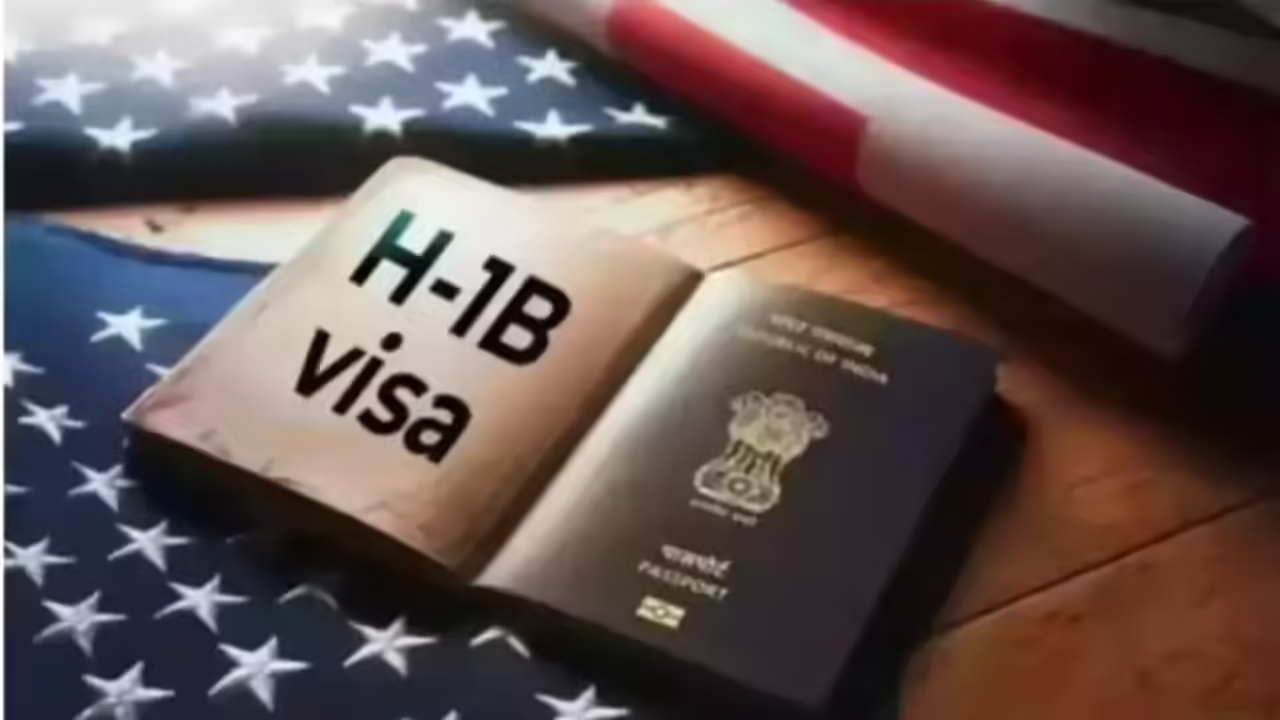
US, Attempts to Tighten H-1B Visa Norms Have Long, Bipartisan History
Introduction
GK & Current Affairs for CLAT | CLAT Current Affairs 2026
Powered by CLAT Gurukul – Best online coaching for CLAT
In September 2025, the United States government announced a $100,000 fee for new H-1B visa applications, sparking major concerns among Indian IT companies — the largest beneficiaries of this visa category. The move is part of a broader effort by the US to “curb the exploitation” of foreign worker programs and prioritize American employment.
This latest policy shift, however, is not an isolated development. For nearly two decades, both Republican and Democratic administrations have introduced or supported legislation seeking to tighten regulations around the H-1B visa system, often citing similar concerns — job displacement, wage suppression, and labor exploitation.
For CLAT 2026 aspirants studying international policy and economics, this topic provides vital insights into how immigration laws reflect domestic politics, economic protectionism, and global labor dynamics.
Why in News
- The US administration’s September 19, 2025 proclamation introduced a $100,000 processing fee for new H-1B visa petitions.
- The stated goal: to reduce exploitation of the program by companies using cheaper foreign labor, particularly Indian IT firms, to replace American workers.
- The move follows a long line of bipartisan legislative efforts — spanning multiple presidencies — aimed at tightening foreign work visa norms.
- Indian IT companies such as Infosys, TCS, Wipro, and HCL Technologies are expected to be heavily impacted, as the US remains their largest operational market.
- Experts see this as part of a larger anti-outsourcing sentiment gaining political traction in the US ahead of the 2026 midterm elections.
Understanding the H-1B Visa System
- The H-1B visa is a non-immigrant visa that allows US companies to employ foreign professionals in specialty occupations requiring technical expertise (e.g., IT, engineering, medicine).
- The visa program is designed to fill gaps in the US labor market where skilled domestic workers are unavailable.
- India accounts for nearly 70% of all H-1B visas issued annually — making Indian professionals the primary stakeholders.
- The program has long been criticized by American policymakers who claim it displaces local workers and depresses wage levels.
The September 2025 Proclamation: What It Says
The new policy aims to:
- Impose a $100,000 fee per new H-1B visa application.
- This is a substantial increase from the previous fee structure (average $6,000–$10,000).
- Deter overreliance on cheaper foreign labor by raising the cost burden on employers.
- Encourage firms to hire US citizens or permanent residents by making foreign hiring economically less attractive.
- Target large IT service firms that depend on bulk H-1B applications each year.
- Reassert the “America First” labor priority, echoing previous political administrations.
Historical Context: A Bipartisan Effort
Contrary to popular belief, the tightening of H-1B visa norms is not limited to Republican governments. Both Democratic and Republican administrations have pursued reforms under different pretexts.
- Obama Administration (2009–2016)
- Focused on curbing visa misuse and outsourcing loopholes.
- Introduced higher compliance requirements for firms outsourcing labor to Indian companies.
- Promoted STEM (Science, Technology, Engineering, Mathematics) education among Americans to reduce dependency on foreign workers.
- Trump Administration (2017–2020)
- Took the most aggressive stance against the H-1B system.
- Drafted the “Protecting American Jobs and Workers” executive order, focusing on:
- Restricting the number of visas to firms with over 50% foreign employees.
- Increasing minimum salary thresholds to make hiring foreign workers costlier.
- Trump’s rhetoric of “Hire American, Buy American” resonated strongly with blue-collar voters affected by automation and outsourcing.
- Biden Administration (2021–Present)
- Initially more lenient, promising to make the H-1B system “merit-based and fair.”
- However, under domestic political pressure, Biden’s government revived several Trump-era proposals, culminating in the 2025 $100,000 visa fee.
- The move demonstrates how economic nationalism has become a bipartisan consensus in US politics.
Key Legislative Efforts in the Past
- a) H-1B and L-1 Visa Reform Act of 2016
- Introduced by Bill Pascrell and Dana Rohrabacher.
- Sought to prohibit companies from hiring more than 50% of employees on H-1B visas.
- Aimed to raise wages and prevent abuse of the visa system.
- b) High-Skilled Integrity and Fairness Act (2017)
- Proposed by Democrat Zoe Lofgren.
- Set a minimum wage of $130,000 for H-1B workers (up from $60,000).
- Objective: Make it uneconomical to replace Americans with cheaper foreign labor.
- c) Grassley-Durbin Bill (2015, reintroduced 2020)
- Proposed stricter oversight on visa issuance.
- Targeted outsourcing-dependent companies, requiring them to prove the unavailability of American workers before hiring foreign employees.
- d) Protect and Grow American Jobs Act (2017)
- Sponsored by Republicans Darrell Issa and Scott Peters.
- Proposed raising the H-1B minimum salary to $100,000 and tightening eligibility for tech employers.
Rationale Behind the Recent Move
- Protecting American Workers
- The US government claims the H-1B system has been manipulated by large IT outsourcing firms to:
- Replace American employees with cheaper foreign labor.
- Force displaced US workers to sign non-disclosure agreements preventing them from discussing severance conditions.
- The proclamation stated:
“Foreign IT firms have undermined the purpose of the H-1B system, significantly harming American workers in computer-related fields.”
- Addressing Wage Inequality
- The median wage for H-1B workers is often below that of local employees in similar roles.
- Increasing visa costs is meant to narrow the wage gap and discourage exploitative hiring practices.
- Political Optics
- Immigration reform is a hot-button election issue.
- Restricting foreign work visas appeals to both working-class American voters and nationalist constituencies.
Impact on Indian IT Industry
- Increased Costs
- The $100,000 fee will drastically raise operational expenses for Indian tech firms like TCS, Infosys, and Wipro.
- Smaller firms and startups dependent on US contracts may face profit margin pressure.
- Reduced Hiring
- Indian companies may reduce on-site staffing in the US and shift focus to remote outsourcing.
- Shift to Alternative Markets
- Firms are expected to diversify client bases toward Europe, the Middle East, and Asia-Pacific.
- Some may expand nearshore centers in countries like Canada and Mexico, which have friendlier visa regimes.
- Talent Drain Concerns
- Indian professionals aspiring for US jobs could face longer wait times and higher application barriers, leading to migration to Canada, Australia, or the UK.
Broader Global Implications
- For the US Economy:
- Restrictive visa policies may backfire by reducing innovation and limiting access to skilled labor in key tech sectors.
- For India:
- Remittances from H-1B workers (currently over $10 billion annually) could decline.
- India may strengthen domestic job creation policies in IT and AI sectors.
- For Global Labor Mobility:
- The move reflects a global shift toward protectionism — seen in Brexit, EU migration caps, and Japan’s immigration tightening.
Long-Term Policy Trends
Period | Administration | Nature of Policy | Core Objective |
2009–2016 | Obama (Democrat) | Regulatory | Prevent visa misuse |
2017–2020 | Trump (Republican) | Restrictive | Prioritize American jobs |
2021–2025 | Biden (Democrat) | Regulatory/Protectionist | Balance labor rights with global competitiveness |
This timeline underscores the bipartisan nature of H-1B restrictions — reflecting shared political consensus rather than partisan rivalry.
Critical Analysis
- Economic Contradiction:
- US tech companies rely heavily on foreign talent for innovation.
- Excessive restrictions could slow down technological progress and hurt competitiveness.
- Moral Paradox:
- While advocating for globalization and open markets, the US simultaneously restricts labor mobility — the very essence of globalization.
- Political Compulsion:
- The reforms appeal to domestic populism, especially in election cycles dominated by job loss narratives.
- India’s Challenge:
- India must now invest in upskilling, AI-driven employment, and digital exports to reduce dependency on H-1B opportunities.
Conclusion
The tightening of H-1B visa norms reflects a complex interplay of economics, politics, and nationalism.
While intended to protect American workers, such moves risk undermining the US tech industry’s global competitiveness and innovation ecosystem.
For India, this policy shift underscores the urgent need to create domestic opportunities for its vast pool of skilled professionals.
As the world’s largest exporter of IT talent, India must pivot toward knowledge-based self-reliance rather than overdependence on external markets.
For students preparing with the best online coaching for CLAT, this topic provides a rich example of international law, immigration policy, and global labor governance — essential for understanding Current Affairs 2026 in an analytical and legal context.
Notes: Explanation of Peculiar Terms
- H-1B Visa:
A US visa allowing employers to hire foreign workers in specialized fields like IT, engineering, and finance. - L-1 Visa:
Allows multinational companies to transfer executives or skilled employees from overseas branches to the US. - Outsourcing:
The business practice of hiring external or overseas workers to perform services that could be done domestically. - Non-Immigrant Visa:
A temporary visa category for individuals who do not intend to permanently settle in the host country. - Protectionism:
Economic policy restricting imports or foreign influence to protect domestic industries. - Wage Suppression:
Artificially maintaining low wages by hiring cheaper foreign labor. - Executive Order:
A presidential directive with the power of law, often used to implement policy without congressional approval.
This Blog is Powered by CLAT Gurukul — India’s Leading Law Entrance Prep Platform
At CLAT Gurukul, we believe in empowering future legal minds with the right blend of knowledge, strategy, and mentorship. This blog is a reflection of our commitment to quality content that not only helps aspirants stay updated but also sharpens their conceptual clarity.
Why CLAT Gurukul?
- Personalized Mentorship by Top Legal Educators
- Comprehensive Study Materials & Legal Updates
- Daily Practice Sets, Mocks & Performance Tracking
- Result-Oriented Strategy for CLAT, AILET, and CUET
Whether you’re reading this article to deepen your understanding or to stay ahead in your exam prep — you’re already one step closer with CLAT Gurukul by your side.
Join thousands of successful aspirants who trusted CLAT Gurukul and cracked India’s top law entrance exams.
Visit https://www.youtube.com/@CLATGurukul/shorts to learn more or speak to our experts now!
Note from CLAT Gurukul
At CLAT Gurukul, we are committed to providing free CLAT study material, including CLAT current affairs, legal reasoning practice sets, general knowledge updates, logical reasoning questions, English comprehension exercises, and more — all curated by top mentors.
Our blog section is regularly updated with high-quality CLAT content tailored to match the evolving pattern of the CLAT UG exam. Whether you’re looking for CLAT 2026 current affairs, CLAT legal reasoning passages, or mock practice sets, we have you covered.
We believe in open-access learning and will continue to publish free CLAT preparation resources to help serious aspirants succeed.
Explore more free content under categories like:
Best online coaching for CLAT, CLAT current affairs, CLAT GK updates, CLAT legal updates, CLAT logical reasoning, and CLAT English preparation.
For structured learning, daily mocks, and expert mentorship, visit https://www.youtube.com/@CLATGurukul/shorts — the Best CLAT Coaching in Patna and India’s most trusted platform for CLAT online coaching.
